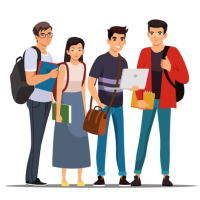Ответ на вопрос №469595: The Irish Travellers are the largest minority in Ireland. There are about 25,000 Irish Travellers in Ireland and 1,300 in Northern Ireland. They are a little understood nomadic community, who have many difficulties to overcome if they are to survive as a culture and gain acceptance into Irish society. Among the challenges facing them are poverty and racism. The Irish Travellers are a distinctThe Irish Travellers are the largest minority in Ireland. There are - Ответ на вопрос №469595The Irish Travellers are the largest minority in Ireland. There are - Ответ на вопрос №469595
2025-05-102025-05-10СтудИзба
The Irish Travellers are the largest minority in Ireland. There are - Ответ на вопрос №469595
Вопрос
The Irish Travellers are the largest minority in Ireland. There are about 25,000Irish Travellers in Ireland and 1,300 in Northern Ireland. They are a little
understood nomadic community, who have many difficulties to overcome if they
are to survive as a culture and gain acceptance into Irish society. Among the
challenges facing them are poverty and racism. The Irish Travellers are a
distinct ethnic group which has existed for centuries. Often they are mistakenly
considered part of the nomadic Romani, an ethnic group which originated in
the region of India and is now widespread throughout Europe. But the Irish
Travellers are indigenous to Ireland, so the two cultures are not related. While
both are nomadic, the Irish Travellers are Roman Catholic and speak a
language that is theirs alone. They have their own culture, customs, traditions,
and language. They are noted for their musical and storytelling abilities. In
times past, they travelled by horse-drawn wagon in caravans, making camp
along the way. Tinsmithing, horse trading and peddling were the major sources
of income in those days. Tinsmiths were so prevalent among Irish Travellers
that the terms Tinker and Irish Traveller were used interchangeably. Today,
Tinker is one of many names for Irish Travellers. Horses and wagons have
given way to mobile homes pulled by motor vehicles. They continue their life on
the road, but there are fewer places to stop and fewer places where they are
welcome. Today, Irish Travellers mainly work in re¬cycling. Changing needs of
society and progress have eliminated the jobs that could support a culture on
wheels. Irish Travellers are poor, undereducated, and on the receiving end of
discrimination. Their life expectancy is lower than average while their infant
mortality rate is higher than average. As is the case with the Romani, the Irish
Travellers are seen by many as a group of immoral, ignorant criminals and con
artists. People distrust their nomadic culture and their language, Shelta. Many
think it's a secret language specifically developed as a tool to help the Irish
Travellers trick innocent people. But this is not true. It is an old language, which
has evolved with time and circumstances. Once heavily infused with Irish
Gaelic, it is now infused with English.
In the past the Irish Travellers went around by ... in caravans.
- horse-drawn wagon
- foot
- camels





















